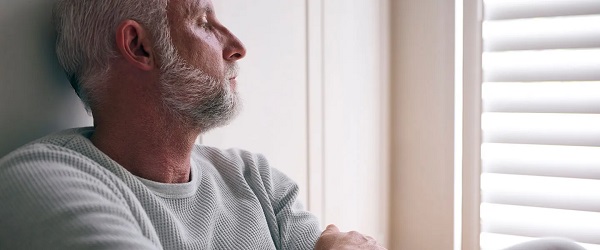Canadian Energy Centre
Indigenous trade mission to China highlights opportunity for B.C. LNG

Karen Ogen is CEO of the First Nations LNG Alliance. Photo supplied to Canadian Energy Centre
From the Canadian Energy Centre
By Will Gibson
First Nations LNG Alliance CEO Karen Ogen takes message of coastal nations to Beijing
Participating in a recent trade mission to China has strengthened Karen Ogen’s view of the opportunity for B.C. liquefied natural gas (LNG).
For the CEO of the First Nations LNG Alliance, one of 10 Indigenous business leaders in the Canada China Business Council’s trade mission to Beijing in late October, the opportunity was as obvious as the grey smog that blankets the air above China’s capital city on most days.
“So much of the problem with smog and air quality stems from using coal-fired plants to generate electricity,” says Ogen, a former elected chief and councillor of the Wet’suwet’en First Nation.
Researchers have found that switching Chinese coal plants to natural gas from Canada could reduce emissions by up to 62 per cent.
“The Chinese don’t view LNG as a fossil fuel. They see it as an important part of moving towards carbon neutrality,” Ogen says.
“There are huge opportunities for LNG in China and other Asian markets, especially for the coastal nations in British Columbia. The need is there, and the appetite is there. It’s up to us to take advantage of it.”
Ogen previously took trips to China between 2015 to 2018. The most recent trade mission was organized by the Canada China Business Council specifically for Indigenous businesses, organizations and leaders to build connections and partnerships to develop export markets and sources of investment to facilitate exports.
Ogen said the delegation gained valuable insights into new forces shaping China in the post-pandemic era, notably around using social media platforms such as TikTok as part of their marketing and e-commerce outreach to the Chinese market. But she remains struck by the appetite for LNG as a lever to lower emissions as energy demand rises.
“China produces 30 per cent of the world’s greenhouse gas emissions — it’s the world’s largest emitter and they are committed to addressing that,” Ogen says.
The U.S. Energy Information Administration projects natural gas demand in the Asia Pacific region will increase by 55 per cent in the next three decades, reaching 54 trillion cubic feet in 2050.
Canada can make a meaningful difference in helping reduce emissions by supplying Asian markets with LNG, she says.
“Converting coal-fired plants in China to LNG produced in Canada would make a bigger impact on greenhouse gas emissions than anything we do in Canada,” Ogen says.
“Canada needs to think globally when it comes to climate change.”
The United States already has seen this opportunity and is addressing it by aggressively expanding LNG exports. Already one of the world’s largest LNG exporters, there are five new LNG projects being built in the U.S.
Canada’s first LNG project is under construction with first exports targeted by 2025. Two Indigenous communities on the B.C. coast are advancing their own proposed terminals, Cedar LNG and Ksi Lisims LNG.
Ogen doesn’t want to see Canada or B.C.’s coastal First Nations shut out of the opportunities she saw on the trade mission.
“The message we received from China’s officials was very clear. They are prepared to do business with Canada and Canada’s Indigenous business community. There are opportunities for investment,” she says.
“But we need governments to work with us to realize those opportunities. If we pursue them seriously, there are real economic benefits for Canada and First Nations.”
And the five-day trade mission has convinced Ogen about the need to address the barriers for Canadian LNG.
“We have a real opportunity to help address climate change while benefiting First Nations,” she says. “It makes too much sense for us not to fight for this.”
Canadian Energy Centre
Saskatchewan Indigenous leaders urging need for access to natural gas

Piapot First Nation near Regina, Saskatchewan. Photo courtesy Piapot First Nation/Facebook
From the Canadian Energy Centre
By Cody Ciona and Deborah Jaremko
“Come to my nation and see how my people are living, and the struggles that they have day to day out here because of the high cost of energy, of electric heat and propane.”
Indigenous communities across Canada need access to natural gas to reduce energy poverty, says a new report by Energy for a Secure Future (ESF).
It’s a serious issue that needs to be addressed, say Indigenous community and business leaders in Saskatchewan.
“We’re here today to implore upon the federal government that we need the installation of natural gas and access to natural gas so that we can have safe and reliable service,” said Guy Lonechild, CEO of the Regina-based First Nations Power Authority, on a March 11 ESF webinar.
Last year, 20 Saskatchewan communities moved a resolution at the Assembly of First Nations’ annual general assembly calling on the federal government to “immediately enhance” First Nations financial supports for “more desirable energy security measures such as natural gas for home heating.”
“We’ve been calling it heat poverty because that’s what it really is…our families are finding that they have to either choose between buying groceries or heating their home,” Chief Christine Longjohn of Sturgeon Lake First Nation said in the ESF report.
“We should be able to live comfortably within our homes. We want to be just like every other homeowner that has that choice to be able to use natural gas.”
At least 333 First Nations communities across Canada are not connected to natural gas utilities, according to the Canada Energy Regulator (CER).
ESF says that while there are many federal programs that help cover the upfront costs of accessing electricity, primarily from renewable sources, there are no comparable ones to support natural gas access.
“Most Canadian and Indigenous communities support actions to address climate change. However, the policy priority of reducing fossil fuel use has had unintended consequences,” the ESF report said.
“Recent funding support has been directed not at improving reliability or affordability of the energy, but rather at sustainability.”
Natural gas costs less than half — or even a quarter — of electricity prices in Alberta, British Columbia, Ontario, Manitoba and Saskatchewan, according to CER data.
“Natural gas is something NRCan [Natural Resources Canada] will not fund. It’s not considered a renewable for them,” said Chief Mark Fox of the Piapot First Nation, located about 50 kilometres northeast of Regina.
“Come to my nation and see how my people are living, and the struggles that they have day to day out here because of the high cost of energy, of electric heat and propane.”
According to ESF, some Indigenous communities compare the challenge of natural gas access to the multiyear effort to raise awareness and, ultimately funding, to address poor water quality and access on reserve.
“Natural gas is the new water,” Lonechild said.
Alberta
The beauty of economic corridors: Inside Alberta’s work to link products with new markets

From the Canadian Energy Centre
Q&A with Devin Dreeshen, Minister of Transport and Economic Corridors
CEC: How have recent developments impacted Alberta’s ability to expand trade routes and access new markets for energy and natural resources?
Dreeshen: With the U.S. trade dispute going on right now, it’s great to see that other provinces and the federal government are taking an interest in our east, west and northern trade routes, something that we in Alberta have been advocating for a long time.
We signed agreements with Saskatchewan and Manitoba to have an economic corridor to stretch across the prairies, as well as a recent agreement with the Northwest Territories to go north. With the leadership of Premier Danielle Smith, she’s been working on a BC, prairie and three northern territories economic corridor agreement with pretty much the entire western and northern block of Canada.
There has been a tremendous amount of work trying to get Alberta products to market and to make sure we can build big projects in Canada again.
CEC: Which infrastructure projects, whether pipeline, rail or port expansions, do you see as the most viable for improving Alberta’s global market access?
Dreeshen: We look at everything. Obviously, pipelines are the safest way to transport oil and gas, but also rail is part of the mix of getting over four million barrels per day to markets around the world.
The beauty of economic corridors is that it’s a swath of land that can have any type of utility in it, whether it be a roadway, railway, pipeline or a utility line. When you have all the environmental permits that are approved in a timely manner, and you have that designated swath of land, it politically de-risks any type of project.
CEC: A key focus of your ministry has been expanding trade corridors, including an agreement with Saskatchewan and Manitoba to explore access to Hudson’s Bay. Is there any interest from industry in developing this corridor further?
Dreeshen: There’s been lots of talk [about] Hudson Bay, a trade corridor with rail and port access. We’ve seen some improvements to go to Churchill, but also an interest in the Nelson River.
We’re starting to see more confidence in the private sector and industry wanting to build these projects. It’s great that governments can get together and work on a common goal to build things here in Canada.
CEC: What is your vision for Alberta’s future as a leader in global trade, and how do economic corridors fit into that strategy?
Dreeshen: Premier Smith has talked about C-69 being repealed by the federal government [and] the reversal of the West Coast tanker ban, which targets Alberta energy going west out of the Pacific.
There’s a lot of work that needs to be done on the federal side. Alberta has been doing a lot of the heavy lifting when it comes to economic corridors.
We’ve asked the federal government if they could develop an economic corridor agency. We want to make sure that the federal government can come to the table, work with provinces [and] work with First Nations across this country to make sure that we can see these projects being built again here in Canada.
-

 2025 Federal Election1 day ago
2025 Federal Election1 day agoRCMP memo warns of Chinese interference on Canadian university campuses to affect election
-

 2025 Federal Election2 days ago
2025 Federal Election2 days agoConservative Party urges investigation into Carney plan to spend $1 billion on heat pumps
-

 Alberta2 days ago
Alberta2 days agoAlberta takes big step towards shorter wait times and higher quality health care
-

 2025 Federal Election2 days ago
2025 Federal Election2 days agoFifty Shades of Mark Carney
-

 2025 Federal Election19 hours ago
2025 Federal Election19 hours agoResearchers Link China’s Intelligence and Elite Influence Arms to B.C. Government, Liberal Party, and Trudeau-Appointed Senator
-

 2025 Federal Election2 days ago
2025 Federal Election2 days agoCorporate Media Isn’t Reporting on Foreign Interference—It’s Covering for It
-

 Business2 days ago
Business2 days agoTrump raises China tariffs to 125%, announces 90-day pause for countries who’ve reached out to negotiate
-

 2025 Federal Election1 day ago
2025 Federal Election1 day agoThe status quo in Canadian politics isn’t sustainable for national unity






